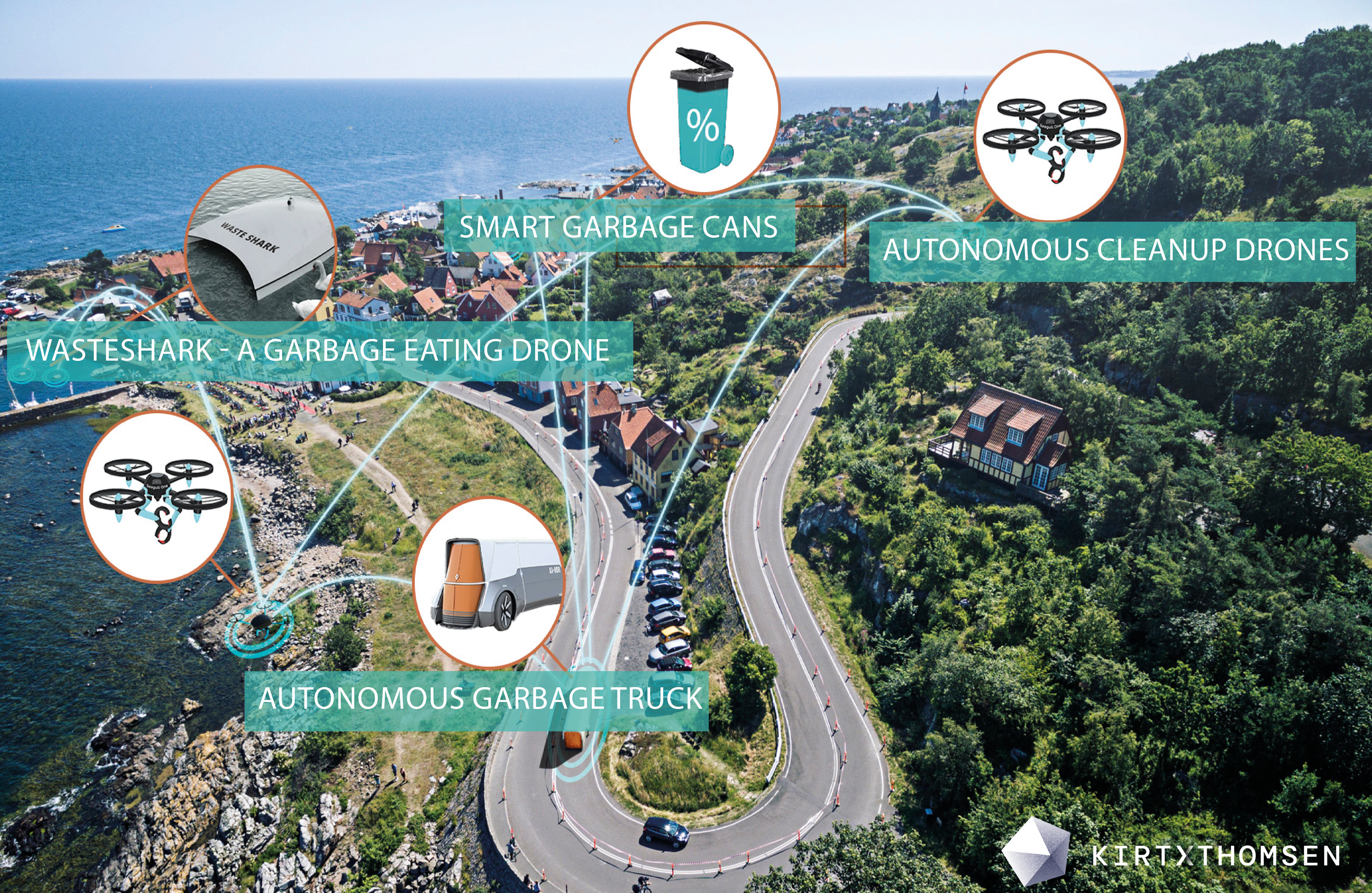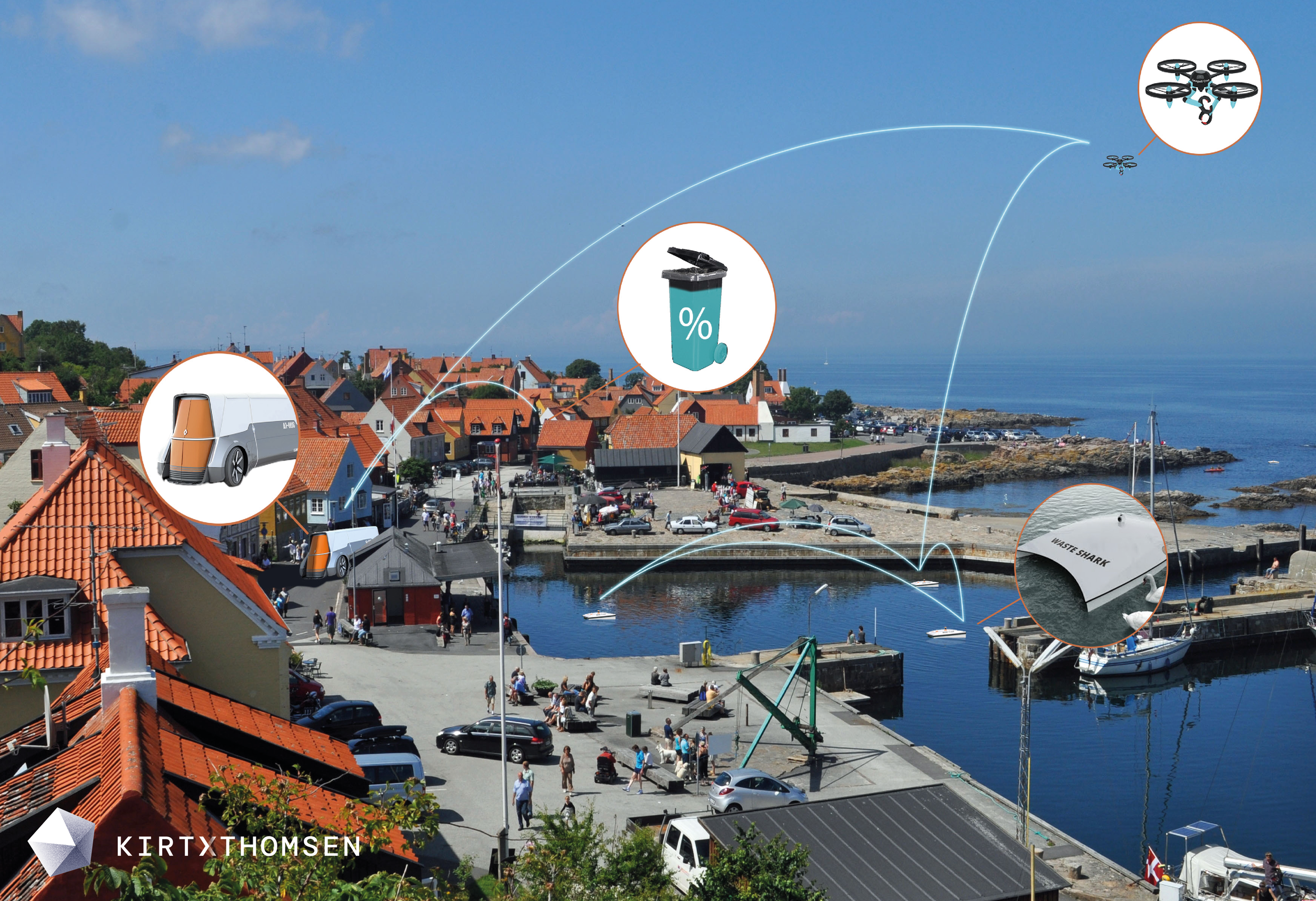Exploring autonomous waste management design
Converting linear waste management into a 100% circular one: illuminating and exploring possibilities with local citizens to help Danish island of Bornholm become waste-free by 2032.
Challenge
Waste management is present in majority of 17 SDG’s. Fixing the “collect & dispose” culture would significantly change our production and consumption patterns. Knowing that, Bornholm boldly faces an elephant in the room and shows the way without waste.
BOFA — a waste management organization in Bornholm is moving beyond the perception of waste as a problem to a waste as a resource. The island’s aging incinerator is going into retirement soon. Instead of replacing it with a new one, BOFA aims to lead the waste-less future. How we get to that point is an exciting process, because there is so much we don’t yet know. We have a vision, but no clear-cut plan on how to get there - said Jens Hjul-Nielsen, CEO of BOFA for National Geographic.
BOFA together with the EU-funded and design-driven Wasteman project seeks to identify solutions for sorting waste in households and easing reuse of materials. We were part of a two-day public kick-off workshop, where a project was presented to local citizens of the Gudhjem community. Gudhjem has been selected as a test city for future waste solutions based on a number of special challenges, for example, waste collection and sorting. Thus, we did an overview of the potential future.
Deliverables
Our key role during the workshop was to instigate and inspire the Gudhjem community with solutions that would support circular waste management. We presented tech trends and good practices globally. To stimulate the imagination even further, we extrapolated autonomous waste management solutions into a visual representation within Gudhjem city. The visualization is quick & dirty, yet it helps to fuel a discussion on how to criticize the existing system and dream about the creative and radical solutions for the circular one. How can autonomous waste management systems support the predominant idea of waste as a threat? How would it change a “collect and dispose culture”? Which futuristic technologies we can already pick up to prototype for Gudhjem?
Showing a visual simulation is like an artifact from the future that helps to engage the community and stimulates co-thinking, allowing to dig better into the details of that vision. The purpose is not about showing the futures that are going to happen, but by being able to show it and discuss it, we are enabling better and more informed decisions in the present.
Status
Today the vision of autonomous waste management idea is live and moving further in Gudhjem. Check the prototype of self-driving garbage can which happily accepts 10 different kinds of waste.
What they say
“Rune Kirt explained new technology trends within waste sorting and resource management:
- Many places use surplus heat from industry for heating houses. There are also a lot of smaller companies that run a business out of waste. Among other things, shoes, sunglasses and jewelry made of plastic from the sea are produced.
- The robot technology of autonomous devices is on its way and is very close to be ready for the market. For example, drones that collect waste in the oceans and beaches, as well as self-driving rubbish bins”


